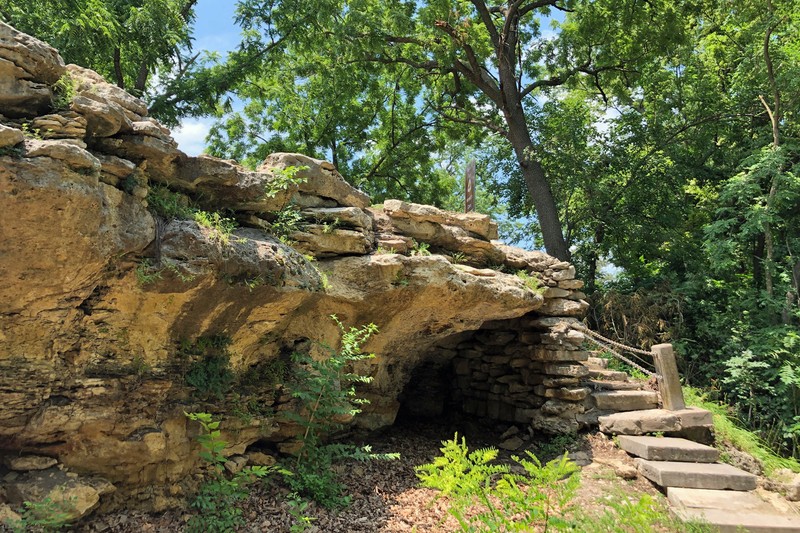Hermit's Cave and William McKinley Monument
Introduction
Text-to-speech Audio
This public park in Council Grove was established in 1901 and later added to the National Register of Historic Places for its connection to the history of Council Grove. The park is home to a small cave that is the center of an unverifiable local myth about a priest who allegedly lived in the cave for five months. In 1863, the hill at this park became home to a wooden tower with a church bell that became available after a Lawrence congregation became aware that it was cracked. The bell tower was located here until 1884 when it was destroyed in a storm. The bell was damaged by vandals and repurposed as a flower pot until the fall of 1901 when area citizens returned it to this location and incorporated it into a small stone monument honoring President McKinley following his assassination. In the early 20th century, local boosters made multiple attempts to connect this park to the larger history of the Santa Fe Trail in hopes of boosting tourism.
Images
A photo of Hermit's Cave in 2023

The McKinley Monument containing the bell that came to Council Grove from a Lawrence church in 1863
.jpg)
Backstory and Context
Text-to-speech Audio
The park's historical significance is tied to a bell tower erected in the middle of the Civil War for Lawrence's Plymouth Congregational Church in 1863 but rejected because of a crack According to an article published in 1930, the citizens of Council Grove needed a bell to signal the start of school and church. That story also claimed that the bell was used to warn of raids by area Native Americans, but that part appears to be fictional for a variety of reasons from a lack of proof to the fact that such conflicts predate the 1863 arrival of the bell. The tower was destroyed in a storm in 1884 leading to damage, so a local resident repurposed the bell until 1901 when it was incorporated into a stone monument to honor the late President William McKinley following his assassination in 1901. The park is the centerpiece of several local legends that cannot be verified, including a story published in the late 19th century claiming that Giovanni Agostini, a Catholic priest, chose to live in the small cave near the monument for a series of five months.
Sources
United States Department of the Interior . National Register of Historic Places Registration Form, Hermit’s Cave on Belfry Hill , National Park Service. Accessed March 7th, 2024. chrome-extension://efaidnbmnnnibpcajpcglclefindmkaj/https://www.kshs.org/resource/national_register/nominationsNRDB/Morris_HermitsCaveonBelfryHillNR.pdf.
https://commons.wikimedia.org/wiki/File:Belfry_Hill_McKinley_Old_Bell_%28Council_Grove,_Kansas%29.jpg
